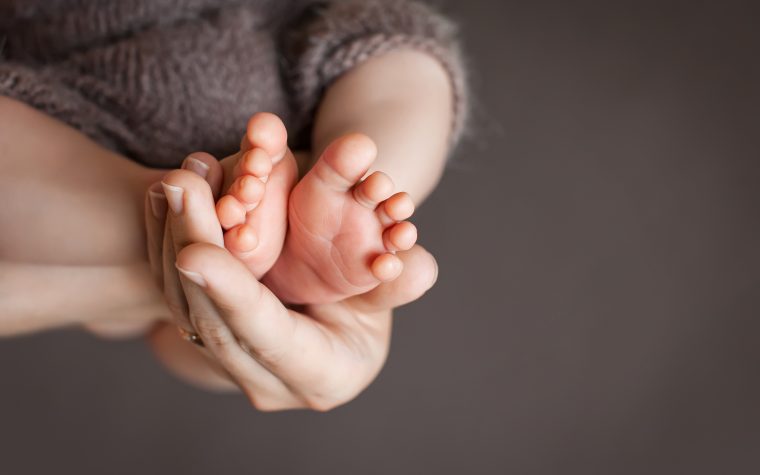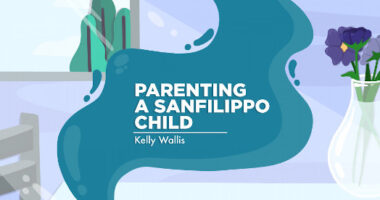The Things We Carry: Welcome to ‘Plot Twist’

Oh, the things my arms have held. I’ve carried my beloved stuffed animals and blankies, my school books and book bags, my moving boxes and furniture, and my babies. Emotionally, I’ve carried a sense of purpose, a sense of pride, a sense of responsibility. But the most significant thing I’ve ever carried turned out to be a minuscule gene mutation that was embedded in me the moment I was conceived.
I am a carrier of Sanfilippo syndrome.
If you saw me, you would see nothing amiss. What you can’t see is that my NAGLU gene includes a mutated copy. However, human genetics dictates that genes come in pairs, and my second copy — a spare, if you will — is not mutated. The spare works just fine and can instruct my cells how to create and distribute the alpha-N-acetylglucosaminidase enzyme throughout my body, clearing cell waste and allowing me to function properly, disguising the secret dysfunction within.
This secret in my genetic code has been passed down through my family from generation to generation, and no one has been the wiser. Being a Sanfilippo carrier does not impact one’s health, and genetic testing to determine carrier status often has been cost-prohibitive and, frankly, unconsidered. Why would someone with no family history of Sanfilippo get genetically tested for a condition they weren’t aware even existed?
Unknowing carriers like me proceed with “normal” life: growing, planning, accomplishing. And I was not unique in this aspect. This exact scenario was playing out in another biological family — that of the man who would become my husband.
Being a carrier of Sanfilippo isn’t a big deal until it is. And then it’s the biggest deal. Because the way that most people find out that they are a carrier is by learning that their child is afflicted with Sanfilippo.
They find out that, somehow, a degenerative condition they’d never even heard of had been hiding inside their body and their significant other’s body their entire lives. Then, they unwittingly played a game of autosomal recessive roulette, and each parent passed the mutated copy to the child. No spare. No alpha-N-acetylglucosaminidase enzyme recipe card. And currently, no chance of survival.
That’s what my husband and I were told in 2015 when our son, Will, was diagnosed with Sanfilippo at the tender age of 4. It’s a heartbreaking plot twist.
It is estimated that 400 million people globally are affected by rare disease; this means the carrier rate for rare conditions is exponentially higher. For instance, it is estimated that one in every 133 people carries a mutation that can cause Sanfilippo, while the disease only affects one in 70,000 children.
Sanfilippo is a progressive, degenerative condition that affects a person both physically and cognitively. There is no treatment, and life expectancy is roughly the mid-teens. What’s especially difficult is that most children with Sanfilippo are born seemingly healthy and often aren’t properly diagnosed until after age 5, when the cell waste accumulating inside their bodies has become significant enough to start producing symptoms. We have no idea that the beautiful babies we are carrying home will receive a terminal diagnosis in a few years, so we plan and dream for the future, for our story, as every family does.
As our stories sharply change course, Sanfilippo carriers soon learn to carry new things. As our children’s bodies deteriorate, we carry IEP goals and therapy schedules and medication regimens and specialist appointments, and eventually, our babies in our arms again when their muscles fail. As our children’s voices go silent, we carry both the difficulty and privilege of being the voice, the advocate, and the decision-maker for them.
As carriers, we are in the rare disease community, but we don’t actually have a rare disease. Sometimes we may feel like imposters and wish desperately that our children could voice their own choices, but we bear this sacred responsibility of care as best we can.
Some of us may carry an unyielding sense of guilt that our bodies betrayed us and our children.
However, we also learn to carry a hope that pushes us forward. Hope for more research, for actual treatments, for more support for families, and for better understanding of the Sanfilippo community’s needs. When a plot twist hits and the narrative shifts, all we can do is try to navigate and adapt as best we can, continually revising and modifying the story we are writing for ourselves and our families. The journey is difficult, and the changes are continual and substantial, but we go forward.
We learn to carry on.
***
Note: Sanfilippo News is strictly a news and information website about the syndrome. It does not provide medical advice, diagnosis, or treatment. This content is not intended to be a substitute for professional medical advice, diagnosis, or treatment. Always seek the advice of your physician or other qualified health provider with any questions you may have regarding a medical condition. Never disregard professional medical advice or delay in seeking it because of something you have read on this website. The opinions expressed in this column are not those of Sanfilippo News or its parent company, Bionews, and are intended to spark discussion about issues pertaining to Sanfilippo syndrome.







Leave a comment
Fill in the required fields to post. Your email address will not be published.